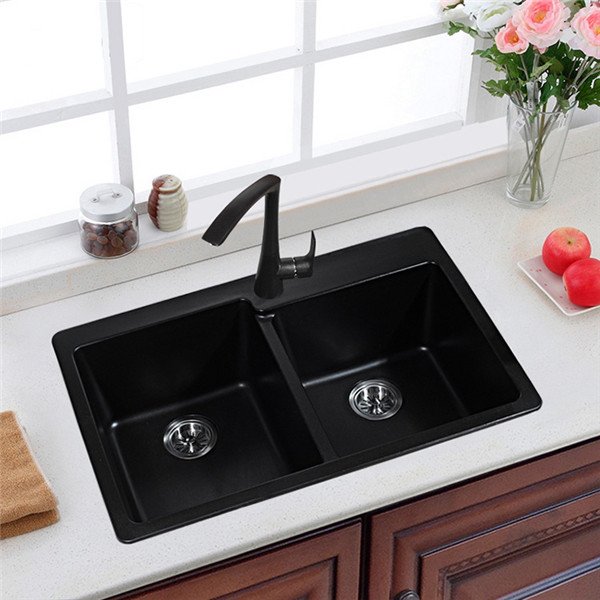Granite sinks are among the most marketable as well as one of the most wanted kitchen sinks in the industry. They come with enviable features that make them stand out among other material sinks with regards to resilience, durability, and functionality.
However, most people tend to get confused about some information about top-quality sink material. Thus, composition and production statistics are a topic for hot debate.
In this article, we will explain certain terms to help defuse the ongoing debate – does high quartz content in a granite sink make it a better commodity? Let’s look at the composition of a granite sink and the significance of the quartz component on the hardness.
Misleading by the concept of imported raw material.
Almost all granite sinks are manufactured with quartz sand or so-called granite particles. A higher number of products by Chinese producers use locally gotten quartz sand for these sinks. Thankfully, the quality of the quartz sand originated from China is as good as the standard foreign ones. Because China is one of the major countries producing quartz sand.
Therefore, some factories raise their price by making use of the imported quartz sand. Besides, the quality of Chinese granite sinks has never been questioned due to their excellent combination of acrylic or resins with quartz sand.
Granite composite production involves heating and molding of the quartz sand and resin. It’s a straightforward process and requires little finishing effort since the final quality determines its molding process.

It has many crystals and also a well-engineered stone for better strength and even design. It is heavier and harder than natural granite because of these added substances.
Moreover, it’s cheaper and better thanks to its stain-resistant and non-porous nature. It’s also easier to maintain and lasts longer than its natural counterpart.
How Are Granite Sinks Made?
During quartz sink production two materials of note are used. A standard proportion for addition is 80% quartz sand and 20% resin (PMMA). These two materials not only make the sinks durable and resilient but also make them safe and healthy for holding food items.
Thus, quartz stone naturally is a food-grade material and doesn’t contain toxic elements. Also, the resin used (PMMA) is a raw material for artificial teeth which means it is very safe to be used on consumption equipment.
Moreover, the manufacturing process of a granite sink may vary as most producers may tweak the quantity of materials. For instance, some manufacturers claim the use of higher quality materials so as to hike the prices of their products.
They advertise granite sinks with over 95% of quartz sand in a bid to command a higher price. This brings us to the ultimate question – does a higher content of quartz sand make a granite sink better?

Here’s a fact all customers should know about granite sinks.
A higher percentage of quartz in a granite sink might not make it better because it also contains sufficient proportion of resin. Considering several hardness tests to which you can subject the sink, granite bowls may not be as strong as most manufacturers pose it.
Hardness can only represent one aspect of a good quartz sink, and the key factor that determines a good quality sink should be its density.
Why density is the key factor of a good quality sink?
Generally speaking, the higher the density of a sink, the better its scratch resistance and wear resistance. Therefore, the higher the density of a sink, the better its quality.
The density of a sink is determined by its production process. Before, we wrote an article on how to calculate the density of a sink and use its density to reflect its manufacturing process.
Here’s a fact you should pick and hold
Naturally, quartz cannot be scratched but because of the resin additives, a granite sink would scratch even if it contains 90% quartz sand. Hence, you can see the resin particles falling from a granite sink when scratched but there will be no scratch marks.

The best proportion for a granite composite sink?
The best ratio of quartz sand and resin should be 80:20, and it is not that the higher content of quartz sand, the better quality. Once the content of quartz sand is too high, it’s easier to crack during the production process, due to the resin is as a binding agent.
Final word
Granite sinks are front runners in the industry in both aesthetics and functionality. However, most buyers would want to know the quality of the product they are buying. Hence, they tend to debate the hardness of the granite sink with regard to its quartz content.
The content above explained in detail how hard the granite sink is and the impact of other component materials. It answered in clear terms the question – the higher quartz content doesn’t make a better granite sink,a reasonable ratio(80:20) does.

